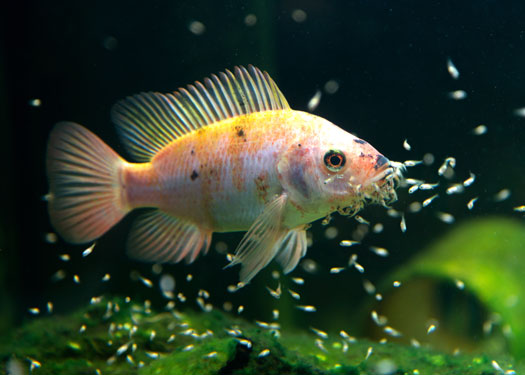
Baby Tropical Fish Care: A Comprehensive Guide for Nurturing Healthy Fry
Introduction
The arrival of baby tropical fish, or fry, is a joyous occasion for any aquarist. These tiny creatures are incredibly fragile and require specialized care to ensure their survival and optimal growth. This comprehensive guide will provide you with all the essential information you need to successfully raise healthy baby tropical fish.
Preparing the Nursery Tank
- Size: Choose a tank that is at least 10 gallons in size to provide ample space for the fry to swim and grow.
- Water Quality: Fill the tank with dechlorinated water and maintain a stable temperature between 78-82°F (26-28°C).
- Filtration: Install a gentle filter to remove waste and maintain water clarity. Avoid using filters with strong currents that can overwhelm the fry.
- Substrate: Use a fine-grained substrate, such as sand or gravel, that will not trap food or debris.
- Plants: Include live plants to provide hiding places and oxygenation. Choose plants with soft leaves that will not harm the fry.
Feeding Baby Tropical Fish
- Frequency: Feed the fry several times a day, offering small amounts of food each time.
- Type of Food: Newly hatched fry require live food, such as brine shrimp nauplii or infusoria. As they grow, you can gradually introduce crushed flake food or baby fish food.
- Quantity: Feed the fry only as much as they can consume in a few minutes. Overfeeding can lead to water quality issues.
Water Changes
- Frequency: Perform small water changes (10-15%) every few days to maintain water quality.
- Temperature: Ensure that the replacement water is the same temperature as the tank water to avoid shocking the fry.
- Siphoning: Use a small siphon to remove waste and debris from the bottom of the tank.
Health Monitoring
- Observe Behavior: Monitor the fry’s behavior closely for any signs of illness, such as lethargy, loss of appetite, or unusual swimming patterns.
- Check Water Parameters: Regularly test the water parameters (pH, ammonia, nitrite, nitrate) to ensure they are within optimal ranges.
- Isolate Sick Fish: If you notice any sick fry, isolate them immediately to prevent the spread of disease.
Common Health Issues
- Swim Bladder Disorder: This condition can cause the fry to float upside down or have difficulty swimming. It can be caused by overfeeding, poor water quality, or genetic defects.
- Bacterial Infections: Bacterial infections can manifest as red or swollen areas on the body or fins. Treatment involves antibiotics.
- Parasitic Infections: Parasitic infections can be caused by protozoa or worms. Symptoms include white spots, flashing, or lethargy. Treatment involves anti-parasitic medications.
Growth and Development
- Growth Rate: The growth rate of fry varies depending on the species and water conditions. Most fry will reach adulthood within a few months.
- Coloration: As the fry grow, they will develop their adult coloration. Some species may undergo dramatic color changes as they mature.
- Sex Determination: Determining the sex of fry can be difficult until they reach sexual maturity. Some species exhibit sexual dimorphism, with males and females having different physical characteristics.
Additional Tips
- Avoid Overcrowding: Do not overcrowd the nursery tank. Too many fry in a small space can lead to stress and health issues.
- Provide Hiding Places: Offer plenty of hiding places for the fry to reduce stress and protect them from predators.
- Avoid Medications: Avoid using medications in the nursery tank unless absolutely necessary. Medications can harm the fry’s delicate immune systems.
- Patience and Observation: Raising baby tropical fish requires patience and close observation. Pay attention to their behavior and water parameters to ensure their well-being.
Conclusion
Raising baby tropical fish can be a rewarding and enjoyable experience. By following the guidelines outlined in this guide, you can provide your fry with the optimal environment and care they need to thrive. With proper attention and monitoring, you can witness the transformation of these tiny creatures into healthy and vibrant adult fish. Remember, the key to success lies in creating a stable and nurturing environment where your fry can flourish.
